人教版必修4 Unit 4 Body language Reading课件 (共33张PPT)
文档属性
| 名称 | 人教版必修4 Unit 4 Body language Reading课件 (共33张PPT) | 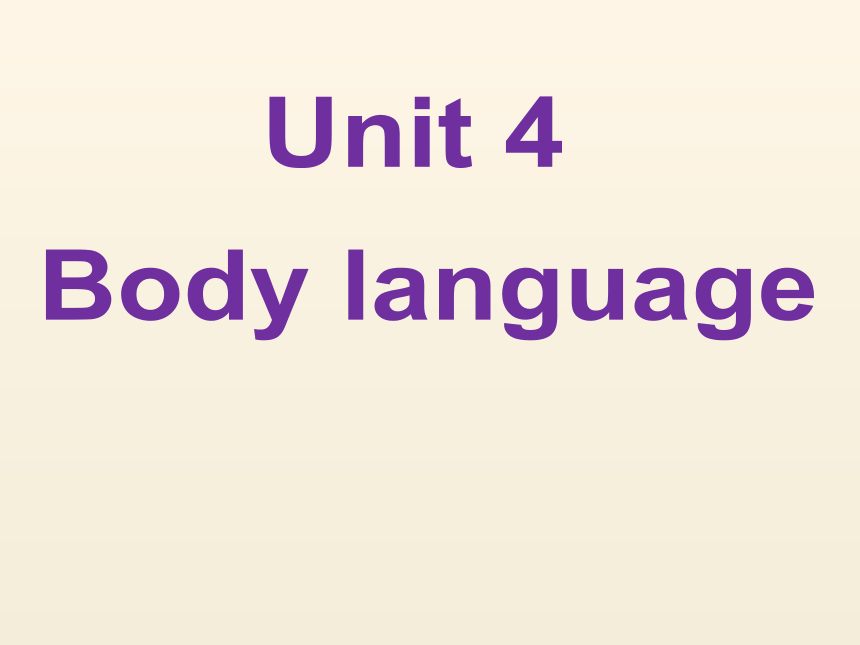 | |
| 格式 | zip | ||
| 文件大小 | 1.9MB | ||
| 资源类型 | 教案 | ||
| 版本资源 | 人教版(新课程标准) | ||
| 科目 | 英语 | ||
| 更新时间 | 2019-06-12 07:41:15 | ||
图片预览

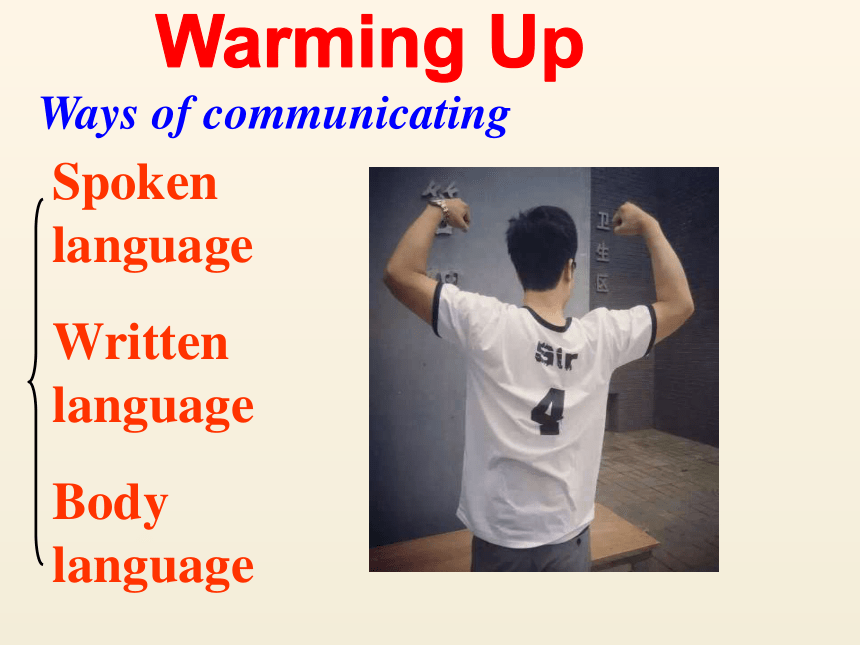
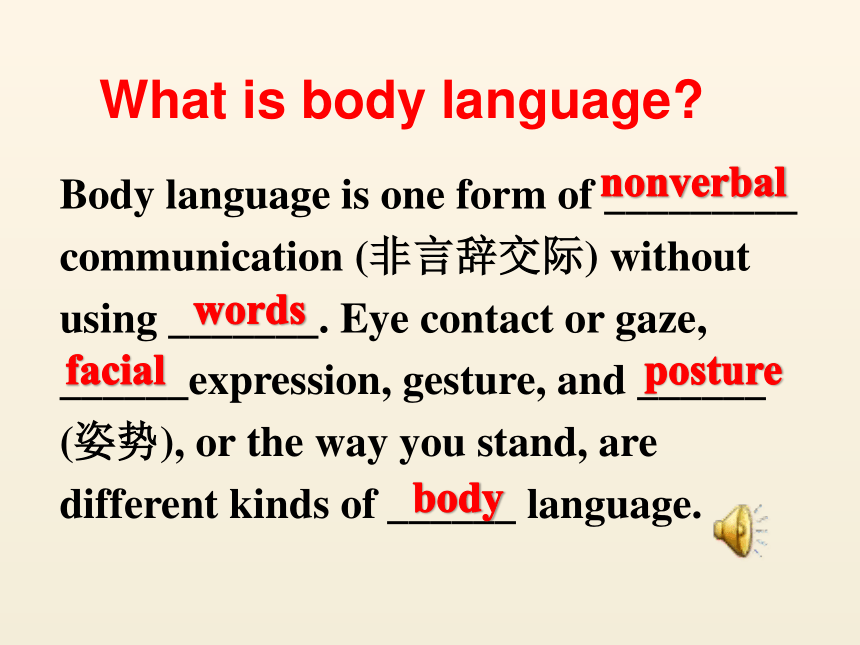
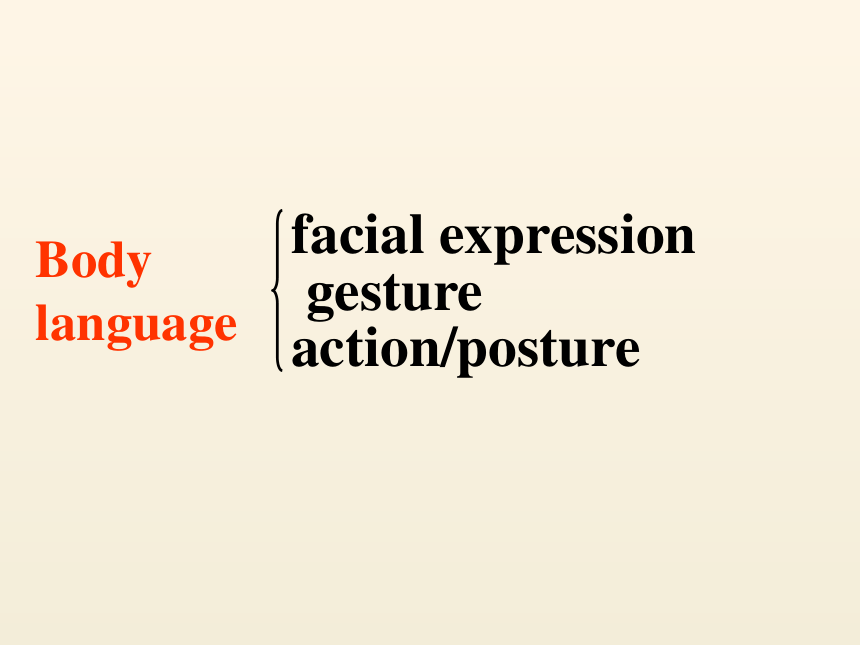
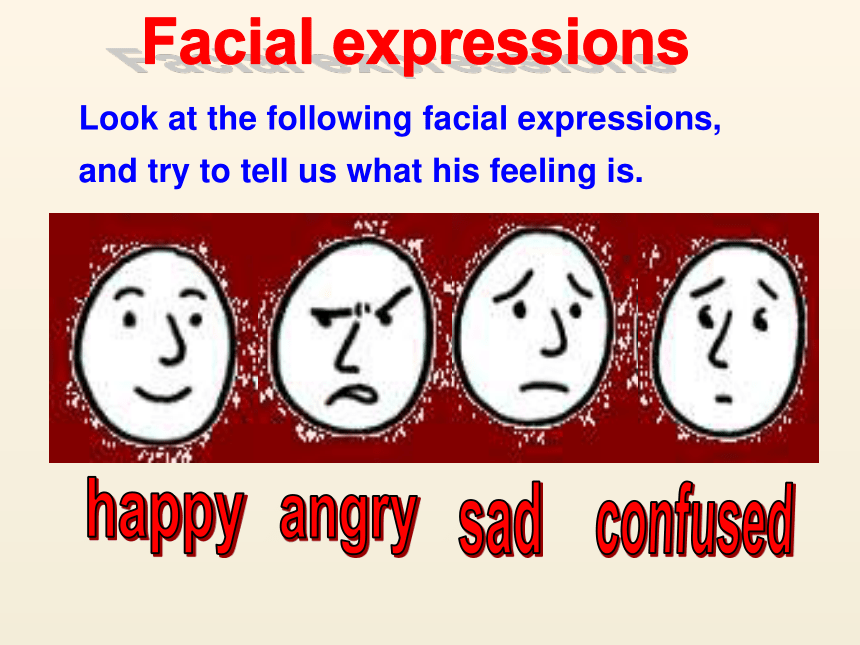
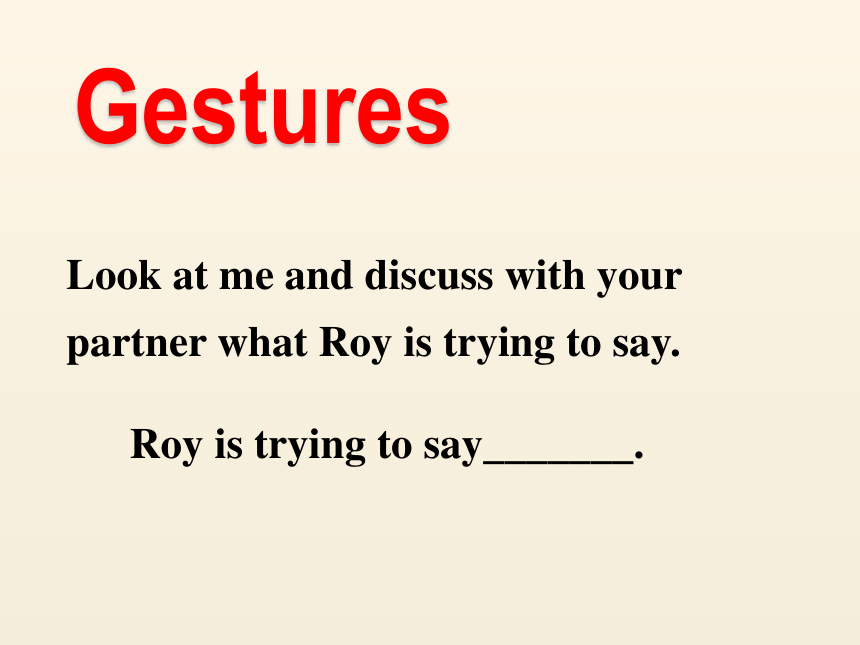
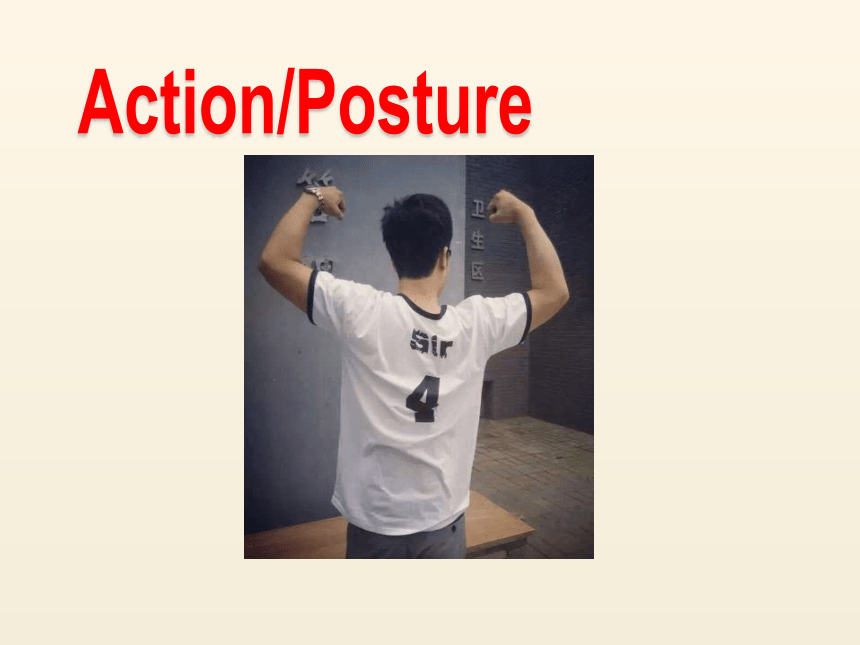
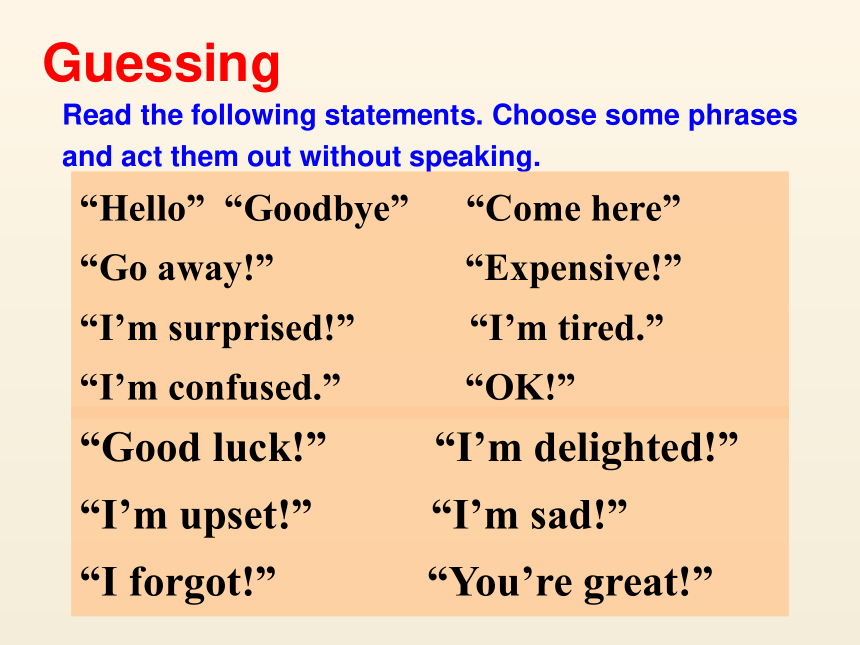

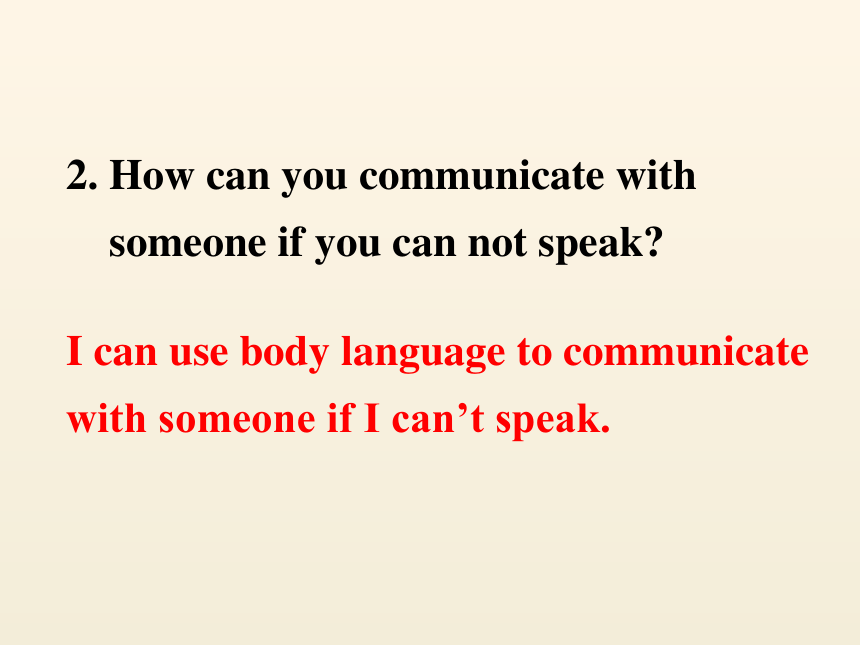
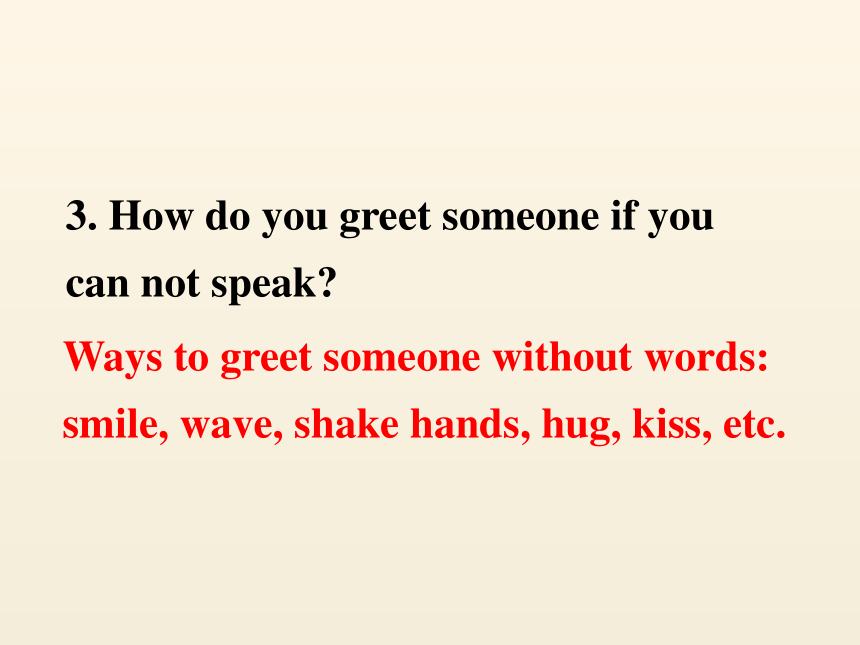
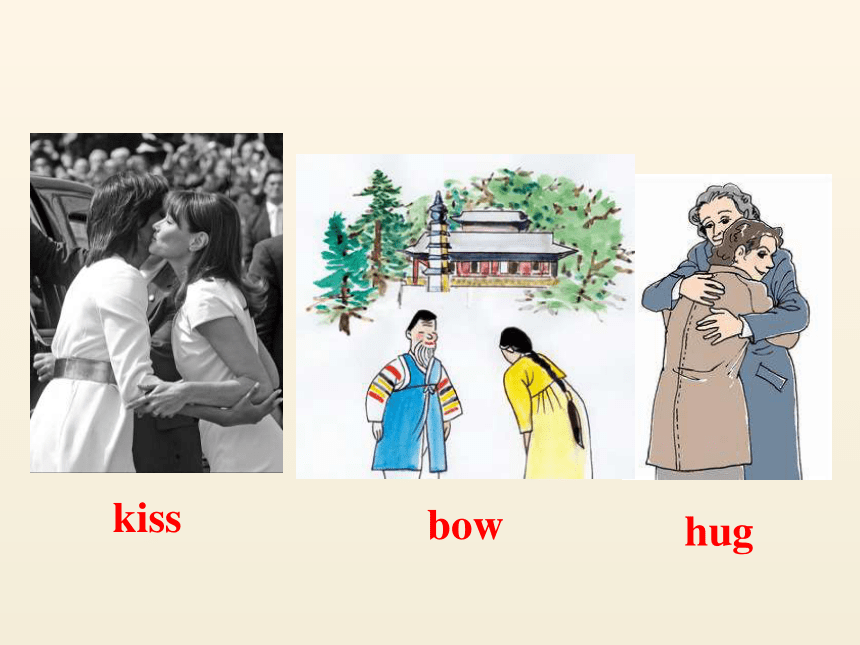
文档简介
课件33张PPT。Unit 4
Body languageSpoken
languageWritten
languageBody
languageWays of communicatingWarming UpWhat is body language?Body language is one form of _________ communication (非言辞交际) without using _______. Eye contact or gaze, ______expression, gesture, and ______ (姿势), or the way you stand, are different kinds of ______ language.nonverbalwordsposturebodyfacialgesturefacial expressionaction/postureBody
languageFacial expressionsLook at the following facial expressions, and try to tell us what his feeling is.happyangrysad confusedGesturesLook at me and discuss with your partner what Roy is trying to say.
Roy is trying to say_______.Action/PostureRead the following statements. Choose some phrases and act them out without speaking. “Hello” “Goodbye” “Come here”
“Go away!” “Expensive!”
“I’m surprised!” “I’m tired.”
“I’m confused.” “OK!”Guessing“Good luck!” “I’m delighted!”
“I’m upset!” “I’m sad!”
“I forgot!” “You’re great!”Pre-reading1. What is the purpose of language?
The purpose of language is to
communicate with other people. 2. How can you communicate with
someone if you can not speak?
I can use body language to communicate with someone if I can’t speak.3. How do you greet someone if you can not speak? Ways to greet someone without words:
smile, wave, shake hands, hug, kiss, etc. kissbowhugRead the text quickly and fill in the blanks.?????? The text introduces some examples of _____________ in greeting people to tell readers that in order to avoid difficulties we should study ____________________ in today’s world of cultural crossroads.?Skimmingbody language?international customs Read the passage and divide the
whole passage into four parts
and find out the main ideas.Part 1. (Para. 1)Meet the visitors at the airport.ScanningPart 2 (Para. 2 and 3)People from different countries express greetings in different ways.Part 3. (Para. 4) Different peoples have different body languages.Part 4. (Para. 5) Summary of body language.How do different international
students behave when they greet
people? Complete the chart with
information from the passage.Careful readingman from Colombiakiss on the cheekJulia Smithwoman from BritaineveryoneAkira Nagatabowing everyoneman from Canada shaking handseveryoneAhmed Aziz man from Jordanshaking hands
noddingDarlene Coulonwoman from Francepeople she knows shake hands, do not stand very close to others or touch strangers when they meetshake handsbowapproach others closely
and are more likely to
touch themshake hands and kiss each other twice on each cheekshake hands and stand quite close to other men, nod to women and do not shake hands with themPost-reading Englishmen often stand close to others or touch strangers as soon as they meet.
Most people around the world now greet each other by kissing.Decide if the following statements
are true (T) or false (F). FF Japanese will bow to others as greeting.
People from Jordan will move very
close to you as you introduce yourself to
them.
TT TPeople from different countries may have a major misunderstanding while greeting each other. The physical distance from each other
that people are comfortable with
generally depends on the culture.
All members of a culture behave in
the same way.T FClose the book and choose the best answers.1. In which of the following countries do people greet each other in the same way?
A. Jordan and Italy.
B. China and Japan.
C. Canada and Colombia. 2. From the text, we can know that _____.
A. people are likely to keep the same
distance in different countries
B. men from Britain often stand close
to others to shake hands
C. people are facing multicultural
communication problemsDiscussionBody language varies
from culture to culture.Body language varies from culture to culture.show interestrude or
disrespectfulzerorudemoneyOKNo.1rudegreat / good jobNoYesGreet
friendsFranceRussiaOther countries
Body languageSpoken
languageWritten
languageBody
languageWays of communicatingWarming UpWhat is body language?Body language is one form of _________ communication (非言辞交际) without using _______. Eye contact or gaze, ______expression, gesture, and ______ (姿势), or the way you stand, are different kinds of ______ language.nonverbalwordsposturebodyfacialgesturefacial expressionaction/postureBody
languageFacial expressionsLook at the following facial expressions, and try to tell us what his feeling is.happyangrysad confusedGesturesLook at me and discuss with your partner what Roy is trying to say.
Roy is trying to say_______.Action/PostureRead the following statements. Choose some phrases and act them out without speaking. “Hello” “Goodbye” “Come here”
“Go away!” “Expensive!”
“I’m surprised!” “I’m tired.”
“I’m confused.” “OK!”Guessing“Good luck!” “I’m delighted!”
“I’m upset!” “I’m sad!”
“I forgot!” “You’re great!”Pre-reading1. What is the purpose of language?
The purpose of language is to
communicate with other people. 2. How can you communicate with
someone if you can not speak?
I can use body language to communicate with someone if I can’t speak.3. How do you greet someone if you can not speak? Ways to greet someone without words:
smile, wave, shake hands, hug, kiss, etc. kissbowhugRead the text quickly and fill in the blanks.?????? The text introduces some examples of _____________ in greeting people to tell readers that in order to avoid difficulties we should study ____________________ in today’s world of cultural crossroads.?Skimmingbody language?international customs Read the passage and divide the
whole passage into four parts
and find out the main ideas.Part 1. (Para. 1)Meet the visitors at the airport.ScanningPart 2 (Para. 2 and 3)People from different countries express greetings in different ways.Part 3. (Para. 4) Different peoples have different body languages.Part 4. (Para. 5) Summary of body language.How do different international
students behave when they greet
people? Complete the chart with
information from the passage.Careful readingman from Colombiakiss on the cheekJulia Smithwoman from BritaineveryoneAkira Nagatabowing everyoneman from Canada shaking handseveryoneAhmed Aziz man from Jordanshaking hands
noddingDarlene Coulonwoman from Francepeople she knows shake hands, do not stand very close to others or touch strangers when they meetshake handsbowapproach others closely
and are more likely to
touch themshake hands and kiss each other twice on each cheekshake hands and stand quite close to other men, nod to women and do not shake hands with themPost-reading Englishmen often stand close to others or touch strangers as soon as they meet.
Most people around the world now greet each other by kissing.Decide if the following statements
are true (T) or false (F). FF Japanese will bow to others as greeting.
People from Jordan will move very
close to you as you introduce yourself to
them.
TT TPeople from different countries may have a major misunderstanding while greeting each other. The physical distance from each other
that people are comfortable with
generally depends on the culture.
All members of a culture behave in
the same way.T FClose the book and choose the best answers.1. In which of the following countries do people greet each other in the same way?
A. Jordan and Italy.
B. China and Japan.
C. Canada and Colombia. 2. From the text, we can know that _____.
A. people are likely to keep the same
distance in different countries
B. men from Britain often stand close
to others to shake hands
C. people are facing multicultural
communication problemsDiscussionBody language varies
from culture to culture.Body language varies from culture to culture.show interestrude or
disrespectfulzerorudemoneyOKNo.1rudegreat / good jobNoYesGreet
friendsFranceRussiaOther countries
同课章节目录
